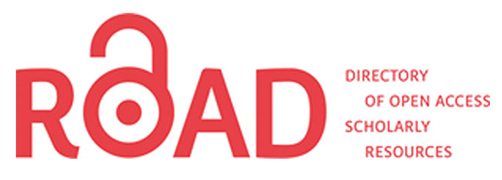Art As a Prelude to the Terrible
DOI:
https://doi.org/10.24215/25250914e041Keywords:
Art, time, finiteness, aesthetic experienceAbstract
The artist investigates the abysses, the limits of his existence, and, from there, he tries to bring to the plane of the sayable his desires, his desires, that which distresses him, that horrifies him. Between those limits that he perceives and inquires, he discovers the possibility of dying as irrebatable; which, in his daily life, is hidden from him.Production and aesthetic experience —liberating time for something in which we regularly live together— give the existing human the viability of revealing his own possibility of dying, his existence as a temporality; and then, revaluing each moment as unique and unrepeatable in responsibility of having to choose, invariably, in your being until death.Downloads
References
Cage, J. (1952). 4′33″ [Composición musical]. Recuperado de https://www.youtube.com/watch?v=gN2zcLBr_VM
Cassirer, E. (1945). Antropología filosófica. Ciudad de México, México: Fondo de Cultura Económica.
Gadamer, H. G. [1977] (1991). La actualidad de lo bello. Barcelona, España: Paidós.
Grüner, E. (2001). El sitio de la mirada. Ciudad Autónoma de Buenos Aires, Argentina: Norma.
Proust, M. [1927] (1994). En busca del tiempo recobrado. Quito, Ecuador: Libresa.
Ricoeur, P. (1990). Freud: Una interpretación de la cultura. Ciudad de México, México: Siglo Veintiuno.
Rilke, R. M. (2001). Las elegías del Duino y otros poemas. Santiago de Chile, Chile: Editorial Universitaria.
Downloads
Published
How to Cite
Issue
Section
License
Current policy since 2019
The acceptance of the manuscript by the magazine means the non-exclusive cession of the property rights of the authors in favour of the editor, who allows the reuse, after publication (post print), under a license Attribution-NonCommercial-NoDerivatives 4.0 International.
According to these terms, the material can be copied and redistributed by any means or in any format as long as a) the author and original source of the publication are quoted (magazine and URL of the work), access to the license is provided and whether changes have been made is mentioned; and b) the material is not used for commercial purposes.
The cession of non-exclusive rights means that after the publication (post print) in Octante the authors can publish their work in any language, means and format; in such cases it must be mentioned that the material was originally published in this magazine.
Such cession also means the authorization of the authors for the work to be collected by SEDICI, the institutional archive of the Universidad Nacional de La Plata, and to be spread in the databases that the editorial team considers appropriate to increase the visibility of the publication and its authors.
Moreover, the magazine encourages the authors to deposit their productions in other institutional and thematic archives under the principle that offering the society the scientific and academic production without any restrictions contributes to a greater exchange of the global knowledge.























